 This scientific station, is one of the Argentinean transient Bases on the white continent. Its name is in honor of Benjamín Matienzo, a pioneer of Argentine aviation. In 2009 it became the only Argentine base to have been inhabited exclusively by women.
This scientific station, is one of the Argentinean transient Bases on the white continent. Its name is in honor of Benjamín Matienzo, a pioneer of Argentine aviation. In 2009 it became the only Argentine base to have been inhabited exclusively by women.
Base T.Te Benjamin Matienzo (WAP ARG-Ø1) is located at 64° 58’ South and 60° 08’ West, in the Larsen Nunatak, belonging to the Foca group, on the eastern side of the Peninsula on the Weddell Sea, 186 km southwest of Marambio Base (WAP ARG-21), from where all personnel and cargo transfers are currently made.
The area where the Base is located, was immersed in the Larsen “A” Ice Shelf, completely disintegrated in 1995. Since then, with annual variations, wide sea surfaces with debris and floating icebergs have been exposed. 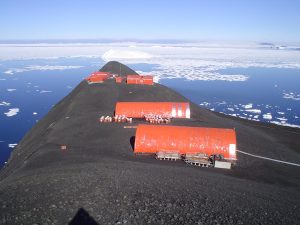 The facilities of the Base occupy a discontinuous strip of about 300 meters in length, at the eastern and narrower end of the nunatak. It was inaugurated on March 15, 1961, located on the old San Antonio Refuge.
The facilities of the Base occupy a discontinuous strip of about 300 meters in length, at the eastern and narrower end of the nunatak. It was inaugurated on March 15, 1961, located on the old San Antonio Refuge.
It was the first Antarctic detachment created jointly between the Argentinean Army and the Air Force, becoming totally dependent on the latter in 1964, with the new name of Teniente Matienzo Air Base, maintaining an endowment of two single-engine Beaver aircraft, operating from the glacier adjacent to the nunatak.
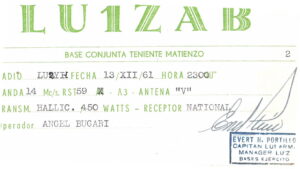 Various scientific activities and historical events of international significance were developed at Matienzo. Extensive meteorological and climatological observation programmes were carried out; the glaciological status of the Matienzo-Esperanza route and the coastal channel between Robertson Island to the South was studied; topographic and aerophotographic surveys of the Larsen Ice Shelf were carried out as well.
Various scientific activities and historical events of international significance were developed at Matienzo. Extensive meteorological and climatological observation programmes were carried out; the glaciological status of the Matienzo-Esperanza route and the coastal channel between Robertson Island to the South was studied; topographic and aerophotographic surveys of the Larsen Ice Shelf were carried out as well.
Pic to the Left, shows an old QSL of LU1ZAB dated 1961, the year of the inauguration of Matienzo Base (TNX LU2YH)
In 1965, two Argentine Gamma Centauro rockets, of national manufacture, were launched along with two balloons probes from Matienzo for X-ray measurement. They moved to the place by means of a transport plane piloted by Commander Mario Luis Olezza. That operation, placed Argentina not only among the small number of countries that built rockets in the 1960s for scientific research, but also carried out launches from Antarctica.
In addition, that same year the Matienzo Base constituted the first stop and the fulcrum of Operation South, the first Argentine Transpolar Flight. Four years later, it was also the base of operations for the creation of the Marambio Base.
In 1972, Matienzo was deactivated as a permanent station and since then it was reopened during most of the summer campaigns to perform tasks of flight support, maintenance of facilities, refueling, meteorological observation and support for scientific activity.
In Matienzo, there is an Antarctic Museum, that has been restored in 2018 and exhibits objects, Antarctic accessories and photographs that recall the history of the base.
In the Antarctic Summer Campaign 2008/2009, Matienzo’s staff was made up entirely of women from the Air Force, constituting a historical fact in Antarctica.
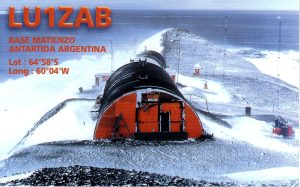 The last reopening of Matienzo was during the 2018 Antarctic Summer Campaign, being operated by a group of ten people, including military and civilians of the Air Force, fulfilling various tasks of maintenance of the facilities and preservation of the environment.
The last reopening of Matienzo was during the 2018 Antarctic Summer Campaign, being operated by a group of ten people, including military and civilians of the Air Force, fulfilling various tasks of maintenance of the facilities and preservation of the environment.
LU1ZAB on air …
After more than 10 years of being inactive, LU1ZAB Matienzo Ham radio Station was activated, which even provided services, as in the old days, for private communications between crew members and their families.
Pic aside and below shows a couple of the last QSLs of LU1ZAB dated 1970 & 1996 (TNX I1UP & I1HYW )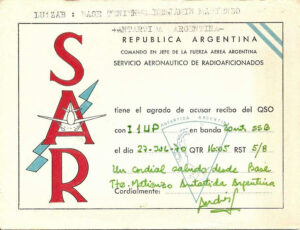
LU1ZAB service, was used as a bridge to make the first radio contacts, later expanded through the phone-patch service, linking the radio equipment with the telephone line, through the Marambio Base.
Thus, the service focuses on the use of radio, in HF bands, historically provided by amateur radio stations could be used directly by those who carry out tasks in Antarctica, as was done so many times in the past.
LU1ZAB amateur radio station’s set up, had several antennas, which allowed testing capabilities and performance, one of the essential functions of this alternative communication service.
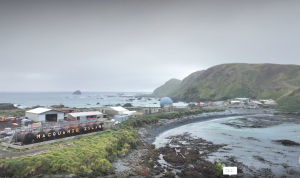 AAD Strategic Infrastructure Manager Adrian Young said good weather had been the helping hand needed get the job done. 350 tonnes of cargo has been delivered to renovate the station.
AAD Strategic Infrastructure Manager Adrian Young said good weather had been the helping hand needed get the job done. 350 tonnes of cargo has been delivered to renovate the station.
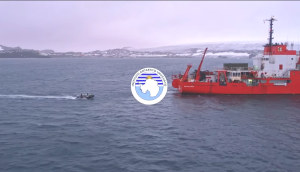 The scientific projects have completed their tasks, and the equipment from Spain used by researchers who have come from that Country, to whom we offer our cooperation in terms of accommodation and use of facilities, given its volume and weight, must return to their country by sea transport.
The scientific projects have completed their tasks, and the equipment from Spain used by researchers who have come from that Country, to whom we offer our cooperation in terms of accommodation and use of facilities, given its volume and weight, must return to their country by sea transport.

 This event is completely unprecedented and upended our expectations about the Antarctic climate system,’ one expert said
This event is completely unprecedented and upended our expectations about the Antarctic climate system,’ one expert said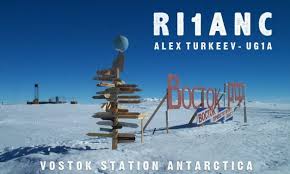 (WAP RUS-14)— at the center of the eastern ice sheet — is around minus-63 (minus-53 Celsius) in March. But on Friday, the temperature leaped to zero (minus-17.7 Celsius), the warmest it’s been there during March since record keeping began 65 years ago. It broke the previous monthly record by a staggering 27 degrees (15 Celsius).
(WAP RUS-14)— at the center of the eastern ice sheet — is around minus-63 (minus-53 Celsius) in March. But on Friday, the temperature leaped to zero (minus-17.7 Celsius), the warmest it’s been there during March since record keeping began 65 years ago. It broke the previous monthly record by a staggering 27 degrees (15 Celsius).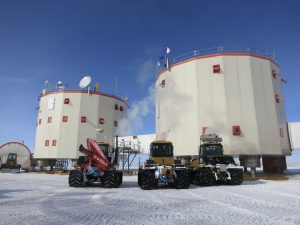 Vostok, a Russian meteorological observatory, is about 808 miles from the South Pole and sits 11,444 feet above sea level. It’s famous for holding the lowest temperature ever observed on Earth: minus-128.6 degrees (minus-89.2 Celsius), set on July 21, 1983.
Vostok, a Russian meteorological observatory, is about 808 miles from the South Pole and sits 11,444 feet above sea level. It’s famous for holding the lowest temperature ever observed on Earth: minus-128.6 degrees (minus-89.2 Celsius), set on July 21, 1983. This scientific station, is one of the Argentinean transient Bases on the white continent. Its name is in honor of Benjamín Matienzo, a pioneer of Argentine aviation.
This scientific station, is one of the Argentinean transient Bases on the white continent. Its name is in honor of Benjamín Matienzo, a pioneer of Argentine aviation.  The facilities of the Base occupy a discontinuous strip of about 300 meters in length, at the eastern and narrower end of the nunatak. It was inaugurated on March 15, 1961, located on the old San Antonio Refuge.
The facilities of the Base occupy a discontinuous strip of about 300 meters in length, at the eastern and narrower end of the nunatak. It was inaugurated on March 15, 1961, located on the old San Antonio Refuge.  Various scientific activities and historical events of international significance were developed at Matienzo. Extensive meteorological and climatological observation programmes were carried out; the glaciological status of the Matienzo-Esperanza route and the coastal channel between Robertson Island to the South was studied; topographic and aerophotographic surveys of the Larsen Ice Shelf were carried out as well.
Various scientific activities and historical events of international significance were developed at Matienzo. Extensive meteorological and climatological observation programmes were carried out; the glaciological status of the Matienzo-Esperanza route and the coastal channel between Robertson Island to the South was studied; topographic and aerophotographic surveys of the Larsen Ice Shelf were carried out as well. The last reopening of Matienzo was during the 2018 Antarctic Summer Campaign, being operated by a group of ten people, including military and civilians of the Air Force, fulfilling various tasks of maintenance of the facilities and preservation of the environment.
The last reopening of Matienzo was during the 2018 Antarctic Summer Campaign, being operated by a group of ten people, including military and civilians of the Air Force, fulfilling various tasks of maintenance of the facilities and preservation of the environment.
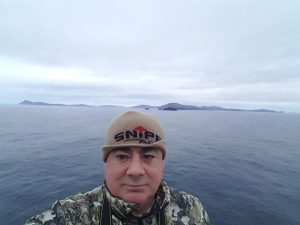 From Cap. Eduardo Abril de Fontcuberta EA4GKV/EO4HAG WAP-242
From Cap. Eduardo Abril de Fontcuberta EA4GKV/EO4HAG WAP-242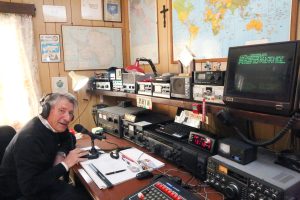 From Gianni I1HYW/IR1ANT WAP ØØ2
From Gianni I1HYW/IR1ANT WAP ØØ2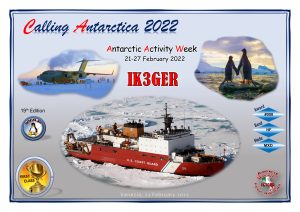
 Thanks to Lt.Danilo Collino IZ1KHY who was recently involved in the 37th Italian Antarctic Season (October 2021 trough February 2022), we have got some recent pictures of the “Chapel of the Snow”, the church been visited by Danilo on his brief stay at McMurdo Station (
Thanks to Lt.Danilo Collino IZ1KHY who was recently involved in the 37th Italian Antarctic Season (October 2021 trough February 2022), we have got some recent pictures of the “Chapel of the Snow”, the church been visited by Danilo on his brief stay at McMurdo Station ( Situated at the end of town, McMurdo Station’s small, blue and white “Chapel of the Snows” stands out against the comparatively drab shipping container-like structures surrounding it. Visitors who step inside the wooden building enter a cozy sanctuary, complete with shelves full of hymnals, musical instruments at the back of the room, and a stained glass window above the pulpit. Other than the black and white penguin embedded in the stained glass, it looks much like any small church around the world.
Situated at the end of town, McMurdo Station’s small, blue and white “Chapel of the Snows” stands out against the comparatively drab shipping container-like structures surrounding it. Visitors who step inside the wooden building enter a cozy sanctuary, complete with shelves full of hymnals, musical instruments at the back of the room, and a stained glass window above the pulpit. Other than the black and white penguin embedded in the stained glass, it looks much like any small church around the world. Chaplain Arthur “Tom” Paine said: “This multi-denominational chapel is for everybody. Months-long deployments away from home can be difficult for many, and the station’s chapel is there to provide a place for people to find personal support and guidance if they need it.”
Chaplain Arthur “Tom” Paine said: “This multi-denominational chapel is for everybody. Months-long deployments away from home can be difficult for many, and the station’s chapel is there to provide a place for people to find personal support and guidance if they need it.”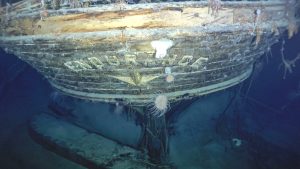 More than a century after its sinking, a scientific expedition “Endurance22” has found the remains of the shipwreck of the Antarctic Explorer Sir Ernest Shackleton (1874-1922), the “Endurance”.
More than a century after its sinking, a scientific expedition “Endurance22” has found the remains of the shipwreck of the Antarctic Explorer Sir Ernest Shackleton (1874-1922), the “Endurance”.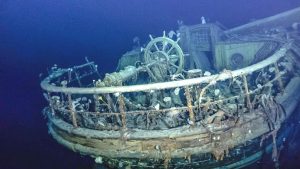 A team of adventurers, marine archaeologists and technicians located the wreck at the bottom of the Weddell Sea, east of the Antarctic Peninsula, using undersea drones. Battling sea ice and freezing temperatures, the team had been searching for more than two weeks in a 150-square-mile area around where the ship went down in 1915. The lost vessel was found at the weekend at the bottom of the Weddell Sea. Scientists have filmed the greatest ever undiscovered shipwrecks 107 years after it sank.
A team of adventurers, marine archaeologists and technicians located the wreck at the bottom of the Weddell Sea, east of the Antarctic Peninsula, using undersea drones. Battling sea ice and freezing temperatures, the team had been searching for more than two weeks in a 150-square-mile area around where the ship went down in 1915. The lost vessel was found at the weekend at the bottom of the Weddell Sea. Scientists have filmed the greatest ever undiscovered shipwrecks 107 years after it sank.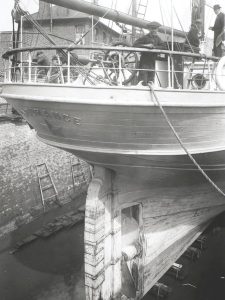 Pic on the Left shows as the stern of Endurance looked in dry dock in 1914 before departure to Antarctica
Pic on the Left shows as the stern of Endurance looked in dry dock in 1914 before departure to Antarctica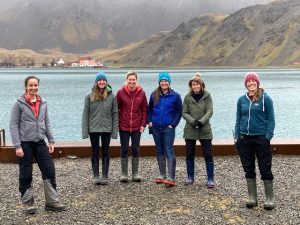
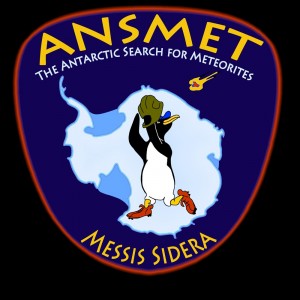 The Antarctic Search for Meteorites program (ANSMET) is a US-led field-based science project that recovers meteorite specimens from Antarctica. Since 1976 we have recovered more than 22,000 specimens from meteorite stranding surfaces along the Transantarctic Mountains. These specimens are a reliable, continuous source of new, non-microscopic extraterrestrial material and support thousands of scientists from around the globs as they seek essential “ground-truth” concerning the materials that make up the asteroids, planets and other bodies of our solar system. The study of ANSMET meteorites has greatly extended our knowledge of the materials and conditions in the primeval nebula from which our solar system was born, revealed the complex and exotic geologic nature of asteroids, and proved, against the conventional wisdom, that some specimens represent planetary materials, delivered to us from the Moon and Mars, free of charge.
The Antarctic Search for Meteorites program (ANSMET) is a US-led field-based science project that recovers meteorite specimens from Antarctica. Since 1976 we have recovered more than 22,000 specimens from meteorite stranding surfaces along the Transantarctic Mountains. These specimens are a reliable, continuous source of new, non-microscopic extraterrestrial material and support thousands of scientists from around the globs as they seek essential “ground-truth” concerning the materials that make up the asteroids, planets and other bodies of our solar system. The study of ANSMET meteorites has greatly extended our knowledge of the materials and conditions in the primeval nebula from which our solar system was born, revealed the complex and exotic geologic nature of asteroids, and proved, against the conventional wisdom, that some specimens represent planetary materials, delivered to us from the Moon and Mars, free of charge. A Team of Thirty-two scientists are sailing to “the place in the world that’s the hardest to get to” so they can better figure out how much and how fast seas will rise because of global warming eating away at Antarctica’s ice.
A Team of Thirty-two scientists are sailing to “the place in the world that’s the hardest to get to” so they can better figure out how much and how fast seas will rise because of global warming eating away at Antarctica’s ice. Marking International Women’s Day, Antarctic experts will share extraordinary untold stories from the icy continent’s past. Join UK Antarctic Heritage Trust on Tuesday 8th March for Untold Stories of Antarctica.
Marking International Women’s Day, Antarctic experts will share extraordinary untold stories from the icy continent’s past. Join UK Antarctic Heritage Trust on Tuesday 8th March for Untold Stories of Antarctica.  Morag Seag, a PhD candidate at the University of Cambridge, will tell the story of women’s integration into Antarctic field science in the mid-twentieth century. Amelia Urry, also a PhD candidate at the University of Cambridge, will share stories of the women behind Antarctic mapping in the 1950s.
Morag Seag, a PhD candidate at the University of Cambridge, will tell the story of women’s integration into Antarctic field science in the mid-twentieth century. Amelia Urry, also a PhD candidate at the University of Cambridge, will share stories of the women behind Antarctic mapping in the 1950s.